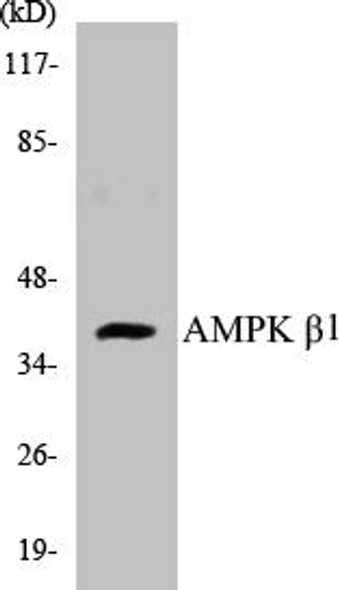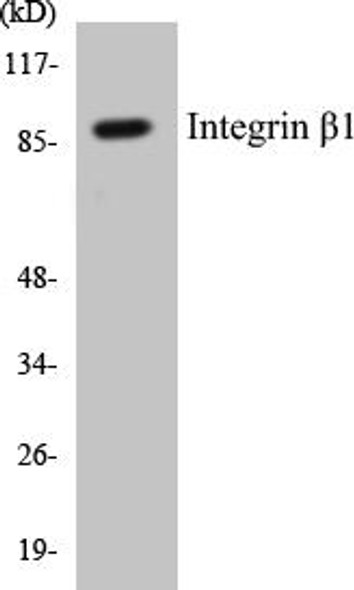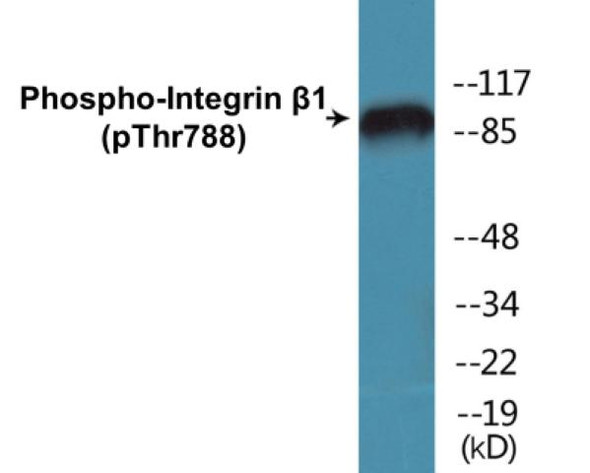Description
| Product Name: | TGF beta1 Colorimetric Cell-Based ELISA |
| Product Code: | CBCAB00882 |
| ELISA Type: | Cell-Based |
| Target: | TGF beta1 |
| Reactivity: | Human, Mouse, Rat |
| Dynamic Range: | > 5000 Cells |
| Detection Method: | Colorimetric 450 nmStorage/Stability:4°C/6 Months |
| Format: | 96-Well Microplate |
The TGF beta1 Colorimetric Cell-Based ELISA Kit is a convenient, lysate-free, high throughput and sensitive assay kit that can detect TGF beta1 protein expression profile in cells. The kit can be used for measuring the relative amounts of TGF beta1 in cultured cells as well as screening for the effects that various treatments, inhibitors (ie siRNA or chemicals), or activators have on TGF beta1.
Qualitative determination of TGF beta1 concentration is achieved by an indirect ELISA format. In essence, TGF beta1 is captured by TGF beta1-specific primary antibodies while the HRP-conjugated secondary antibodies bind the Fc region of the primary antibody. Through this binding, the HRP enzyme conjugated to the secondary antibody can catalyze a colorimetric reaction upon substrate addition. Due to the qualitative nature of the Cell-Based ELISA, multiple normalization methods are needed:
| 1. | A monoclonal antibody specific for human GAPDH is included to serve as an internal positive control in normalizing the target absorbance values. |
| 2. | Following the colorimetric measurement of HRP activity via substrate addition, the Crystal Violet whole-cell staining method may be used to determine cell density. After staining, the results can be analysed by normalizing the absorbance values to cell amounts, by which the plating difference can be adjusted. |
| Database Information: | Gene ID: 7040, UniProt ID: P01137, OMIM: 131300/190180, Unigene: Hs.645227 |
| Gene Symbol: | TGFB1 |
| Sub Type: | None |
| UniProt Protein Function: | TGFB1: Multifunctional protein that controls proliferation, differentiation and other functions in many cell types. Many cells synthesize TGFB1 and have specific receptors for it. It positively and negatively regulates many other growth factors. It plays an important role in bone remodeling as it is a potent stimulator of osteoblastic bone formation, causing chemotaxis, proliferation and differentiation in committed osteoblasts. Homodimer; disulfide-linked, or heterodimer with TGFB2. Secreted and stored as a biologically inactive form in the extracellular matrix in a 290 kDa complex (large latent TGF-beta1 complex) containing the TGFB1 homodimer, the latency-associated peptide (LAP), and the latent TGFB1 binding protein-1 (LTBP1). The complex without LTBP1 is known as the'small latent TGF-beta1 complex'. Dissociation of the TGFB1 from LAP is required for growth factor activation and biological activity. Release of the large latent TGF-beta1 complex from the extracellular matrix is carried out by the matrix metalloproteinase MMP3. May interact with THSD4; this interaction may lead to sequestration by FBN1 microfibril assembly and attenuation of TGFB signaling. Interacts with the serine proteases, HTRA1 and HTRA3: the interaction with either inhibits TGFB1-mediated signaling. The HTRA protease activity is required for this inhibition. Interacts with CD109, DPT and ASPN. Activated in vitro at pH below 3.5 and over 12.5. Highly expressed in bone. Abundantly expressed in articular cartilage and chondrocytes and is increased in osteoarthritis (OA). Co-localizes with ASPN in chondrocytes within OA lesions of articular cartilage. Belongs to the TGF-beta family. |
| UniProt Protein Details: | Protein type:Secreted; Motility/polarity/chemotaxis; Secreted, signal peptide Chromosomal Location of Human Ortholog: 19q13.1 Cellular Component: extracellular space; proteinaceous extracellular matrix; microvillus; cell surface; cell soma; axon; Golgi lumen; cytoplasm; plasma membrane; extracellular region; nucleus Molecular Function:protein binding; enzyme binding; protein homodimerization activity; growth factor activity; protein heterodimerization activity; punt binding; cytokine activity; protein N-terminus binding; glycoprotein binding; antigen binding Biological Process: extracellular matrix organization and biogenesis; positive regulation of apoptosis; positive regulation of transcription, DNA-dependent; SMAD protein nuclear translocation; female pregnancy; positive regulation of protein amino acid dephosphorylation; activation of NF-kappaB transcription factor; regulation of protein import into nucleus; positive regulation of MAP kinase activity; connective tissue replacement during inflammatory response; regulation of transforming growth factor beta receptor signaling pathway; negative regulation of ossification; cell cycle arrest; positive regulation of isotype switching to IgA isotypes; inner ear development; regulatory T cell differentiation; positive regulation of interleukin-17 production; response to drug; positive regulation of smooth muscle cell differentiation; positive regulation of chemotaxis; active induction of host immune response by virus; positive regulation of blood vessel endothelial cell migration; regulation of sodium ion transport; negative regulation of blood vessel endothelial cell migration; negative regulation of fat cell differentiation; lymph node development; positive regulation of protein secretion; positive regulation of transcription from RNA polymerase II promoter; response to progesterone stimulus; endoderm development; positive regulation of odontogenesis; myelination; negative regulation of phagocytosis; evasion of host defenses by virus; positive regulation of cellular protein metabolic process; myeloid dendritic cell differentiation; negative regulation of transcription from RNA polymerase II promoter; phosphate metabolic process; negative regulation of cell proliferation; negative regulation of T cell proliferation; ureteric bud development; regulation of DNA binding; negative regulation of release of sequestered calcium ion into cytosol; positive regulation of cell proliferation; salivary gland morphogenesis; protein kinase B signaling cascade; protein export from nucleus; inflammatory response; aging; positive regulation of exit from mitosis; epidermal growth factor receptor signaling pathway; mitotic cell cycle checkpoint; common-partner SMAD protein phosphorylation; positive regulation of phosphoinositide 3-kinase activity; positive regulation of bone mineralization; positive regulation of peptidyl-serine phosphorylation; SMAD protein complex assembly; positive regulation of protein kinase B signaling cascade; positive regulation of protein complex assembly; positive regulation of protein import into nucleus; response to hypoxia; epithelial to mesenchymal transition; negative regulation of cell growth; negative regulation of cell-cell adhesion; negative regulation of transforming growth factor beta receptor signaling pathway; negative regulation of skeletal muscle development; mononuclear cell proliferation; protein amino acid phosphorylation; regulation of cell migration; hyaluronan catabolic process; regulation of apoptosis; response to vitamin D; negative regulation of neuroblast proliferation; positive regulation of superoxide release; receptor catabolic process; transforming growth factor beta receptor signaling pathway; germ cell migration; response to glucose stimulus; chondrocyte differentiation; T cell homeostasis; defense response to fungus, incompatible interaction; negative regulation of mitotic cell cycle; cell growth; tolerance induction to self antigen; regulation of striated muscle development; platelet activation; organ regeneration; negative regulation of DNA replication; virus-host interaction; hemopoietic progenitor cell differentiation; negative regulation of transcription, DNA-dependent; positive regulation of epithelial cell proliferation; positive regulation of collagen biosynthetic process; viral infectious cycle; response to estradiol stimulus; negative regulation of cell cycle; positive regulation of histone deacetylation; response to radiation; platelet degranulation; negative regulation of protein amino acid phosphorylation; response to wounding; lipopolysaccharide-mediated signaling pathway; adaptive immune response based on somatic recombination of immune receptors built from immunoglobulin superfamily domains; negative regulation of epithelial cell proliferation; intercellular junction assembly and maintenance; regulation of binding; MAPKKK cascade; cellular calcium ion homeostasis; gut development; protein import into nucleus, translocation; ATP biosynthetic process; positive regulation of histone acetylation; positive regulation of protein amino acid phosphorylation; negative regulation of myoblast differentiation; blood coagulation; positive regulation of cell migration Disease: Camurati-engelmann Disease; Cystic Fibrosis |
| NCBI Summary: | This gene encodes a member of the transforming growth factor beta (TGFB) family of cytokines, which are multifunctional peptides that regulate proliferation, differentiation, adhesion, migration, and other functions in many cell types. Many cells have TGFB receptors, and the protein positively and negatively regulates many other growth factors. The secreted protein is cleaved into a latency-associated peptide (LAP) and a mature TGFB1 peptide, and is found in either a latent form composed of a TGFB1 homodimer, a LAP homodimer, and a latent TGFB1-binding protein, or in an active form composed of a TGFB1 homodimer. The mature peptide may also form heterodimers with other TGFB family members. This gene is frequently upregulated in tumor cells, and mutations in this gene result in Camurati-Engelmann disease.[provided by RefSeq, Oct 2009] |
| UniProt Code: | P01137 |
| NCBI GenInfo Identifier: | 135674 |
| NCBI Gene ID: | 7040 |
| NCBI Accession: | P01137.2 |
| UniProt Secondary Accession: | P01137,Q9UCG4, A8K792, |
| UniProt Related Accession: | P01137 |
| Molecular Weight: | 44,341 Da |
| NCBI Full Name: | Transforming growth factor beta-1 |
| NCBI Synonym Full Names: | transforming growth factor, beta 1 |
| NCBI Official Symbol: | TGFB1 |
| NCBI Official Synonym Symbols: | CED; LAP; DPD1; TGFB; TGFbeta |
| NCBI Protein Information: | transforming growth factor beta-1; TGF-beta-1; latency-associated peptide; prepro-transforming growth factor beta-1 |
| UniProt Protein Name: | Transforming growth factor beta-1 |
| UniProt Synonym Protein Names: | |
| Protein Family: | Transforming growth factor |
| UniProt Gene Name: | TGFB1 |
| UniProt Entry Name: | TGFB1_HUMAN |
| Component | Quantity |
| 96-Well Cell Culture Clear-Bottom Microplate | 2 plates |
| 10X TBS | 24 mL |
| Quenching Buffer | 24 mL |
| Blocking Buffer | 50 mL |
| 15X Wash Buffer | 50 mL |
| Primary Antibody Diluent | 12 mL |
| 100x Anti-Phospho Target Antibody | 60 µL |
| 100x Anti-Target Antibody | 60 µL |
| Anti-GAPDH Antibody | 60 µL |
| HRP-Conjugated Anti-Rabbit IgG Antibody | 12 mL |
| HRP-Conjugated Anti-Mouse IgG Antibody | 12 mL |
| SDS Solution | 12 mL |
| Stop Solution | 24 mL |
| Ready-to-Use Substrate | 12 mL |
| Crystal Violet Solution | 12 mL |
| Adhesive Plate Seals | 2 seals |
The following materials and/or equipment are NOT provided in this kit but are necessary to successfully conduct the experiment:
- Microplate reader able to measure absorbance at 450 nm and/or 595 nm for Crystal Violet Cell Staining (Optional)
- Micropipettes with capability of measuring volumes ranging from 1 µL to 1 ml
- 37% formaldehyde (Sigma Cat# F-8775) or formaldehyde from other sources
- Squirt bottle, manifold dispenser, multichannel pipette reservoir or automated microplate washer
- Graph paper or computer software capable of generating or displaying logarithmic functions
- Absorbent papers or vacuum aspirator
- Test tubes or microfuge tubes capable of storing ≥1 ml
- Poly-L-Lysine (Sigma Cat# P4832 for suspension cells)
- Orbital shaker (optional)
- Deionized or sterile water
*Note: Protocols are specific to each batch/lot. For the correct instructions please follow the protocol included in your kit.
| Step | Procedure |
| 1. | Seed 200 µL of 20,000 adherent cells in culture medium in each well of a 96-well plate. The plates included in the kit are sterile and treated for cell culture. For suspension cells and loosely attached cells, coat the plates with 100 µL of 10 µg/ml Poly-L-Lysine (not included) to each well of a 96-well plate for 30 minutes at 37°C prior to adding cells. |
| 2. | Incubate the cells for overnight at 37°C, 5% CO2. |
| 3. | Treat the cells as desired. |
| 4. | Remove the cell culture medium and rinse with 200 µL of 1x TBS, twice. |
| 5. | Fix the cells by incubating with 100 µL of Fixing Solution for 20 minutes at room temperature. The 4% formaldehyde is used for adherent cells and 8% formaldehyde is used for suspension cells and loosely attached cells. |
| 6. | Remove the Fixing Solution and wash the plate 3 times with 200 µL 1x Wash Buffer for five minutes each time with gentle shaking on the orbital shaker. The plate can be stored at 4°C for a week. |
| 7. | Add 100 µL of Quenching Buffer and incubate for 20 minutes at room temperature. |
| 8. | Wash the plate 3 times with 1x Wash Buffer for 5 minutes each time. |
| 9. | Add 200 µL of Blocking Buffer and incubate for 1 hour at room temperature. |
| 10. | Wash 3 times with 200 µL of 1x Wash Buffer for 5 minutes each time. |
| 11. | Add 50 µL of 1x primary antibodies (Anti-TGF beta1 Antibody and/or Anti-GAPDH Antibody) to the corresponding wells, cover with Parafilm and incubate for 16 hours (overnight) at 4°C. If the target expression is known to be high, incubate for 2 hours at room temperature. |
| 12. | Wash 3 times with 200 µL of 1x Wash Buffer for 5 minutes each time. |
| 13. | Add 50 µL of 1x secondary antibodies (HRP-Conjugated AntiRabbit IgG Antibody or HRP-Conjugated Anti-Mouse IgG Antibody) to corresponding wells and incubate for 1.5 hours at room temperature. |
| 14. | Wash 3 times with 200 µL of 1x Wash Buffer for 5 minutes each time. |
| 15. | Add 50 µL of Ready-to-Use Substrate to each well and incubate for 30 minutes at room temperature in the dark. |
| 16. | Add 50 µL of Stop Solution to each well and read OD at 450 nm immediately using the microplate reader. |
(Additional Crystal Violet staining may be performed if desired – details of this may be found in the kit technical manual.)






